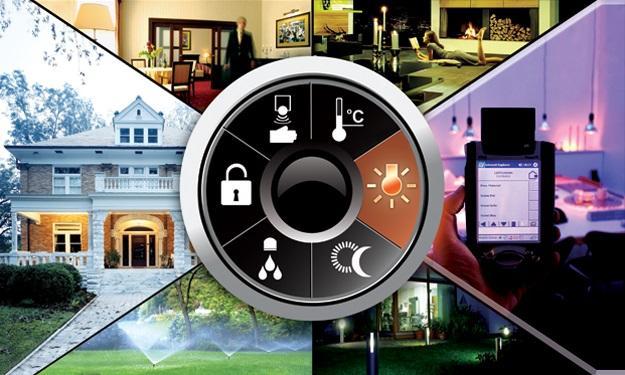The term “smart home” and “home automation” are oftentimes used interchangeably, which might leave you wondering if they mean the same thing. Well, there is an actual difference between the two, but it still might be a little confusing if you’re not so much into tech stuff.
The common ground is both smart home and home automation are meant to enhance how to we perform our daily activities at home and make our lives a whole lot easier.
Smart homes and home automation have been touted for saving time and money, improving security in homes and offering an immense wealth of conveniences. New smart home products such as Google Home and Amazon Alexa allows you to control connected devices via voice commands.
Others can allow you to perform core functions and carry out tasks like turning the lights on/off, closing your garage door and checking if you left your fridge door open from miles away –isn’t that cool?
What is the difference between a smart home and home automation?
Smart homes and home automation are here to stay, and if anything, more homeowners are continually embracing these technologies as companies add more meaningful and practical smart features. In this article, we want to take a detailed look at the actual difference between “smart home” and “home automation”.
What is Home Automation?
On the face of it, home automation is essentially the process by which some of the functions and actions inside your home happen automatically without your intervention. This concept has been around for ages, even before the era of the internet.
The simplest example here is motion sensor lights automatically that turn on when you walk into the room or when someone walks across your front porch. Most garage doors also come with motion sensors that will retract the door if they detect an obstacle in the path of the door -this is automation.
Even something as simple as scheduling a timer on your microwave to turn off the device once your food has warmed or your lawn sprinklers to turn on/off at specific times is still home automation.
Home automation altered the worlds of lighting design, landscape maintenance, temperature control, dinner preparation (turning an oven on or off based on a pre-set schedule), home security and television viewing. But today, all that on its own is dated technology, and they're cooler and more enhanced integrations in the market, thanks to “smart home” technology.
What is “Smart Home”?
The term ‘smart home’ basically refers to a home that has computers, TVs, security system, lighting, heating, entertainment systems, and other electronic appliances/devices that are able to communicate with one another.
Additionally, these devices have an ability to connect to the internet (thanks to the Internet of Things –IoT) and allow the homeowner to monitor and control them remotely from a central platform. This could either be an app on a tablet/smartphone or via voice command on devices like Google Home Assistant or Amazon Alexa.
A perfect example would be things like your smart thermostats, which can be monitored and controlled via an app on your smartphone. So for a smart home to work (or to be called a smart home in the first place) most, if not all of the available smart devices should be remotely accessed and controlled via technologies like Wi-Fi, Bluetooth, Z-wave and so on. Unlike the traditional basic home automation, you need internet access to put together a smart home.
Today, tech giants like Google, Apple, Ring, Samsung, Philips, Amazon, and many others have produced a wide range of smart home devices ranging from smart lights, thermostats, door locks, security cameras, speakers, light switches, smart assistants, etc. many of these smart devices can be operated and monitored remotely, ultimately turning your home into a smart home.
So what is the difference?
Can you tell the difference already? Well, home automation, as mentioned above, may include interconnected home devices/appliances, but doesn’t necessarily need an internet connection. However, in today’s advanced technology, home automation has become part of a smart home.
So it’s actually used to facilitate some of the functions of a smart home. In a smart home setting, home automation creates a system that doesn’t entirely depend on your intervention to function. A smart home might consist of a hub, smart door locks, smart thermostat and smart cameras which are connected to the internet and controlled through apps.
However, your home only becomes automated if, for instance, your garage door locks itself behind you as you drive off the driveway or sensors automatically turn on lights at night when you walk into a room.
Does It Mean Home Automation Can Work With A Smart Home?
Yes, absolutely! And this is called smart home automation –where the real fun begins. The age of smartphones, Internet of Things and artificial intelligence has finally bred ‘smart home automation’. Even before the Internet of Things became a solid concept, motion sensors could detect your presence as you walk into the room and turn on the lights.
However, advanced AI and home automation have now equipped smart lights with advanced capabilities such as facial recognition where the smart lights authenticate your identity before turning on or off. Home automation essentially creates “rules” through technologies like IFTTT (If-this-then-that) in the smart home system that triggers a set of actions. IFTTT is one of the cloud-based enablers of home automation which you can use to create rules that cause “this” to happen “if” “that” happens.
For instance, you can rig your toddler’s room with motion sensors that trigger your nightshade lamp to light red and your phone to vibrate if motion is detected in the toddler’s room. This alerts you if someone is trying to sneak in or if your toddler is wandering away at night. Another classic example of smart home automation is when a smoke/fire is detected in your home.
A well-synchronized smart home system with a smart smoke detector will automatically trigger a series of actions based on how it’s programmed. For instance, in addition to releasing overhead sprinklers, some systems will automatically unlock exit doors, switch off the smart cooker/stove/oven, sound an alarm and send a text alert on your smartphone.
Having smart home devices alone without some level of automation means that you will have to trigger most of the above actions individually. And if it’s a matter of life and death, like in the case of a fire outbreak, every second count! So while “smart home” and “home automation” can exist and function separately, harnessing the combined power of the two offers amplified capabilities and conveniences.
Common Uses of Smart Home Automation

Lighting control
Smart lighting systems allow you to control light switches, lamps, blinds, and bulbs from your smartphone or using voice commands. With smart lights such as Philips Hue Smart Lighting, you can schedule bulbs to light a specific times, choose which particular lights to turn on in which room, change the color and intensity of the light and choose how individual lights react to motion sensitivity.
All these operations can be done locally via your smart home hub or remotely on your smartphone from anywhere in the world.
Heating Control
Heating and cooling in your home account for about 50% percent of your total energy bill in the average home., If you’re able to tame this, you can save a significant amount of money each year. Smart thermostats are created for this purpose exactly. Nest Learning Thermostat, for instance, learns your heating and cooling preferences over time, eliminating the need for programming.
The smart thermostat can reduce the heat when a room is unoccupied, and increase or decrease it at specific times based on your schedule and occupancy. And you can also access and manipulate it from within an app.
Smart Security Systems
Improved monitoring and control of home security systems is another primary focus of smart home automation. Smart home security systems offer features such as smart locks, electronic deadbolts, surveillance cameras, smart video doorbells, motion-sensitive security lights and motion detectors for enhanced security.
All these features can be connected to your smartphone and offer real-time information about the security status of your home.
Smart Appliances
Smart kitchen appliances are no longer just a gimmick that was ten years ago. Today, smart kitchen appliances offer valuable practical features that make your life easier while saving you the effort, time and money at the same time.
Smart refrigerators, such as LG’s Smart ThinQ, for instance, allows you to scan the content of your fridge remotely via an app, scans your grocery store receipts and keeps an inventory of your items. It can also suggest recipes based on the contents of your refrigerator and will alert you if an item is about to expire. Don’t even get me started about smart ovens and smart dishwashers!
To Sum It All Up
A smart home is essentially a home that has a range of connected smart devices that don’t necessarily function by themselves and are generally connected to the internet. Home automation stretches the capabilities and conveniences offered by a smart home, such that most functions can take place automatically.
Most manufacturers and homeowners are aiming for ‘smart home automation’, which ultimately combines and amplifies the power of the two concepts –and you should too.


